#black opry revue
Text

Today, mainstream country music is a multi-billion dollar industry. A cursory glance at the audience and artist demographics might lead you to believe there is no room for Black people in country music. And yet, despite the limited number of Black country artists setting the charts on fire, a quiet but powerful movement of musicians have brought their talents and unique experiences to the country music landscape during the past few years.
Meet The Emerging Americana Stars Of The Black Opry Revue
4 notes
·
View notes
Note
I love this post. https://www.tumblr.com/drew-marsinvestigations/724745820429320192?source=share
I'm from the south, and I haven't listened to country music in so long because none of it feels authentic to my experience or beliefs. I listened to Tyler Childers for the first time today. I loved it. It makes me so nostalgic for the music I grew up listening to. Do you have any recommendations for more songs/artists with this type of music?
oh boy do i this is like one of my favorite things to talk about
putting this above the cut because they deserve the promotion:
Black Opry Revue is a collective of Black country and country adjacent artists that tours, offers artist residencies for Black artists, and generally does fantastic work promoting Black performers in a really white dominated industry. i've seen a set of theirs live and can't recommend them enough !! they are a great place to start for finding artists that fall outside the country mainstream :)
more specific recs below
i would say that tyler and zach bryan are two of the biggest stars of the country/appalachian revival rn and both deserve the praise they get
a tyler gem i would recommend is follow you to virgie live at red barn (really that whole album, there are no skips on it)
zach bryan's live version of revival on his all my homies hate ticket master red rocks recording never fails to make me want to go to a concert posthaste
orville peck is pretty big on tumblr and is a more country-western sound if you like that better! he has some incredible good music that handles topics like bisexuality and relationship violence with a lot of nuance and grace (he also has plenty of fun ones, but i like that he's not afraid to handle difficult topics too)
hexie mountains is one of my favorites by him because it deals with complications around home and distance in ways i love
ok now for some people who aren't as big on here but deserve all our love <3
adia victoria is FANTASTIC and has some really incredible music with a little bit of a darker, more gothic sound
stuck in the south is the obvious place to start
in the pines is also amazing and follows in the sacred country tradition of talking about the grittier sides of the south and trying to understand where you fit into all of that
valerie june is also a little bit less straight-country but she's doing some really cool stuff and she never fails to make me pull out my most exaggerated twang. her voice is amazing
astral plane is my favorite of hers
shakedown never fails to make me dance
i only recently discovered wyatt flores but i love the rasp in his voice on
please don't go
jason isbell has been around for a while and released music as a solo act and with jason isbell and the 400 unit.
morgan wallen (don't bother with him he Sucks) released a cover of his song cover me up that got a ton of press but the original is lightyears ahead of the cover
the nashville sound is no skips album from him
hope the high road off this album fulfills the niche for me i think this year does for a lot of other people
le siren isn't all county but i love her music
the banjo on yikes! Gets me as a country girlie
i saw kyshona live and her voice is UNbelievable
my own grave is my personal fav
the turnpike troubadors have plenty of bangers including
a long way from your heart which is another no skip album
some other bangers:
jersey giant - elle king
georgia to texas - leon bridges (the only reason he didn't get his own section is he's really more r n b but this song is about being from the south so it counts)
just let go - sturgill simpson (this guy's music is all over the place in the best way, and he produced some of tyler's stuff if you like that)
a life where we work out - flatland cavalry ft kaitlin butts
also everyone above is a modern artist but it goes without saying that classic country is full of people with interesting things to say that isn't the boot-licking-bro-country-sound folsom prison blues, harper valley pta, 9 to 5, the pill, cowboys are frequently secretly fond of each other, etc are all classics for a reason !!
finally rainbow kitten surprise really aren't country, but they are a queer band from north carolina and everyone should watch their hide music video which is about being queer in the south and features several drag queens coming out to their families
in conclusion: yeehaw
3 notes
·
View notes
Link
New story on NPR: PHOTOS: Meet The Emerging Americana Stars Of The Black Opry Revue https://ift.tt/3b2dhum
0 notes
Text
21 new artists have been added to the lineup for The Merlefest 2023
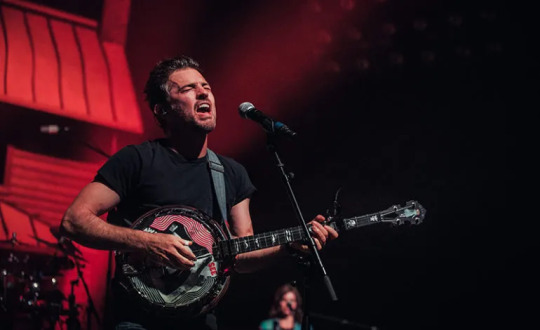
https://music.mxdwn.com/2022/11/15/news/merlefest-announces-initial-2023-lineup-featuring-the-avett-brothers-maren-morris-black-opry-revue-more/
1 note
·
View note
Photo

The Black Opry Revue, a collective of about 20 Black artists on the country, blues and folk music spectrum, showcases the diversity in sound and stories that Black artists offer to these genres, live at the Troubadour on Saturday November 5!
0 notes
Text
Joe's Pub Announces the Return of Sandra Bernhard and Upcoming Shows with Bridget Everett, MASHUP ting!, Free + Outdoor Astor Place Shows, Alysha Umphress, Joan As Police Woman, Molly Lewis, The Black Opry Revue + MORE!
Joe’s Pub Announces the Return of Sandra Bernhard and Upcoming Shows with Bridget Everett, MASHUP ting!, Free + Outdoor Astor Place Shows, Alysha Umphress, Joan As Police Woman, Molly Lewis, The Black Opry Revue + MORE!
Sandra Bernhard (Photo by Brett Erickson)
JOE’S PUB ANNOUNCES THE RETURN OF SANDRA BERNHARD: SOUL’D OUT DECEMEBER 27-31
COMING UP THIS WEEK: LIZA PAUL & BAHIA WATSON’S MASHUP ting! AS PART OF THE JOE’S PUB 2022-23 NEW YORK VOICES ARTIST COMMISSION PROGRAM
JOIN DANCE NOW AT ASTOR ALIVE! OUTDOORS AND FREE ON SEPTEMBER 17 WITH MEGAN WILLIAMS DANCE PROJECT: ONE-WOMAN SHOW AND TAKE DANCE: SOMEWHERE…

View On WordPress
0 notes
Text
youtube
Black Opry Revue: Autumn Nicholas - Not Gonna Do This - Seeing them tonight at the Tennessee Theatre!
0 notes
Text
LUCY AND TENNESSEE ERNIE'S FUN FARM
S1;E23 ~ March 10, 1969


Directed by Jack Donohue ~ Written by Bob O'Brien
Synopsis
A farmer (Ernie Ford) wanders into the Unique Employment Agency in need of farmhands. Instead, Lucy proposes they turn his farm into a vacation spot for city folks. They start with a TV commercial to get the word out!
Regular Cast
Lucille Ball (Lucy Carter), Gale Gordon (Harrison Otis Carter), Lucie Arnaz (Kim Carter), Desi Arnaz Jr. (Craig Carter)
Guest Cast

Tennessee Ernie Ford (Ernie Epperson) was the first and only celebrity to make three guest star appearances (playing a variation on himself) on “I Love Lucy.” A popular country singer of the 1950s, "I Love Lucy” was his first credited ‘acting’ job, before his big hit with the song “Sixteen Tons” in 1955. Ford was first mentioned on season in “Lucy Writes a Play” (ILL S1;E17), when playwright Lucy mistakenly dubs herself the next Tennessee Ernie, instead of Tennessee Williams. He then appeared (also as a variation on himself) on “The Lucy Show.” This is his fifth and final appearance on a Lucille Ball sitcom. Ford was fond of alliterative character names. In addition to Ernie Epperson, he played Homer Higgins on “The Lucy Show,” Loser Lumpkin on "The Red Skelton Show,” and Kentucky Cal on the Desilu-produced "Make Room For Daddy.” He died in 1991.
Epperson owns the Broken Plow Farm in the ‘sue-burb’ of Calabasas.

The Back Porch Majority (Themselves) was a folk music group founded by Randy Sparks in 1963. It was intended to be a rehearsal space for The New Christy Minstrels, another group Sparks had established in 1961, but it ended up becoming successful on its own. The group released six albums and was chosen to provide entertainment at the White House in 1965. They previously backed up Ernie Ford on “The Lucy Show.”
The members of the group are Rusty Richards, Jet Sharon, Kathy Beaudine, Kittie McCue, and Kyra Carleton.
Larry Billman (Dancer, uncredited) was seen on Broadway in the short-lived musical revue Vintage '60 (1960). He has less than ten screen credits and made his career in charge of live entertainment for Disney theme parks. He died in May 2017.
The revue features a live cow, a donkey, and two horses. Other singers, dancers, and musicians appear uncredited.

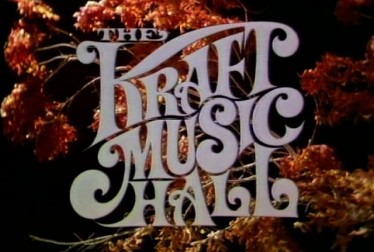
Two days after this episode was first aired (March 12, 1969) Lucie Arnaz made the first of her three appearances on NBC’s “The Kraft Music Hall”, hosted by Wayne Newton and featuring Judy Carne and Tim Conway. Lucille Ball does not appear.
All the singing and instrumentals are prerecorded, although naturally Desi Jr. played his drum solos live. Lucille Ball has only one brief line of solo singing during “Heavenly Music” and it does not sound like her voice. It is very likely Carole Cook, who has been Lucy's ghost singer on two previous occasions. Gale Gordon is also dubbed in that song.

When Lucy asks the overalls-wearing Ernie if he is a farmer, Ernie replies “Well, I ain't that Omar Shareef on his way home from a square dance!” Actor Omar Sharif was nominated for a 1963 Oscar for Lawrence of Arabia and had won a Golden Globe in 1966 for Doctor Zhivago. There is a slight resemblance between Ford and Sharif because they both wore mustaches for most of their public lives.
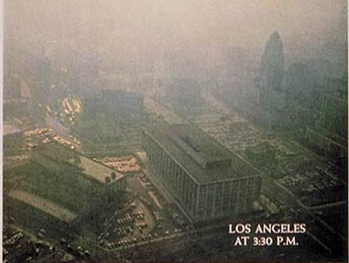
Lucy and Ernie joke about Los Angeles' smog problem. The word smog is a portmanteau of the words smoke and fog. The problem was particularly acute in Los Angeles during the latter half of the 20th century. So much so that the word smog became synonymous with Los Angeles to many. Smog was the source of several jokes on “The Lucy Show” after Lucy Carmichael re-located to Southern California, one of them during Ernie Ford’s last appearance in “Lucy and Tennessee Ernie Ford” (TLS S5;E21).

Ernie says he drives a Model-T. The Ford Motor Company manufactured the Model-T between 1908 and 1927, and it is considered the first affordable car.

The commercial that Lucy and Harry do for Ernie's Fun Farm gives us a glimpse of them as a dysfunctional married couple, complete with two teenage kids!

As the bickering couple, Lucy calls her husband (Sheldon) Porky Pig and the Jolly Green Giant. He calls her the Bride of Frankenstein. Porky Pig was one of the characters in the Warner Brothers cartoons voiced by Mel Blanc. Blanc had appeared with Lucille Ball on radio, films, and TV. The Jolly Green Giant was the mascot of a frozen vegetable company of the same name frequently seen in television ads. “The Bride of Frankenstein” (1935) was a film sequel to 1931's “Frankenstein” based on the novel by Mary Shelley. Coincidentally, the Bride was played by Elsa Lanchester, who guest starred on “I Love Lucy,” and an upcoming episode of “Here's Lucy.”
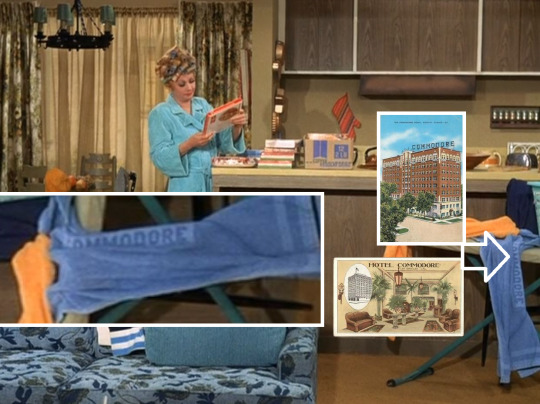
Amidst the clutter of the living room is a bath towel stolen from the Commodore Hotel, a historic building in downtown Los Angeles that has recently been converted to apartments. The Commodore of Hollywood opened in 1927 and has been home to countless celebrities as they launched their careers.

One of the knickknacks on the coffee table is a glass bunch of grapes. If it looks familiar, it previously appeared in “Guess Who Owes Lucy $23.50?” (S1;E11) where there were two of them. After this appearance they became part of the living room set on “The Brady Bunch” which also filmed at Paramount. The recent reality show “A Very Brady Renovation” mentioned tracking them down.
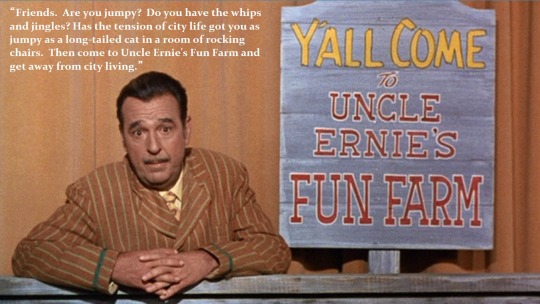
Ernie pays the bickering couple a quick visit to bid them come to his Fun Farm, singing this a capella jingle:
“We're only 45 minutes from L.A.
People all breathing fresh air.
Even a hog smells better than smog
When you're 45 minutes from there.”

The tune Ford uses is inspired by “45 Minutes from Broadway” by George M. Cohan, written in 1906 for a musical of the same name. The title refers to the length of time to travel by train from New Rochelle NY to Manhattan.
The commercial turns into a fully-staged musical revue. Although a lot of standards and show tunes are used, special lyrics to suit the plot were written by Bob O'Brien.

The orchestra plays “Oh, What a Beautiful Morning” from Oklahoma! written by Rodgers and Hammerstein in 1943. A film version was released in 1955. Lucy Ricardo once lied that she was in Oklahoma – then confessed she spent two weeks in Tulsa once. Rodgers and Hammerstein (aka Dick and Oscar) were names frequently dropped on “I Love Lucy.”
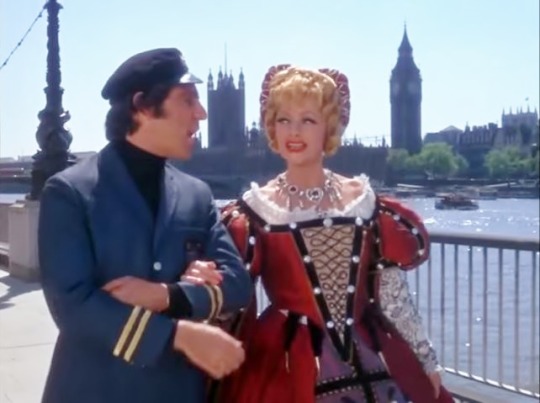
The Back Porch Majority sings “On a Wonderful Day Like Today” from the 1965 musical The Roar of the Greasepaint – The Smell of the Crowd by Leslie Bricusse and Anthony Newley, who also sang it in “Lucy in London” (1966, above).
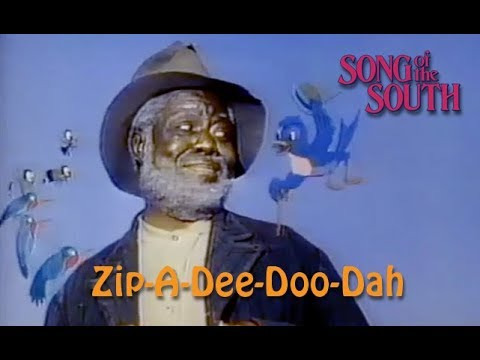
Ernie sings “Zip-a-Dee-Doo-Dah” a song written by Allie Wrubel and Ray Gilbert for the 1946 Disney film Song of the South. It won an Oscar for Best Song.

Ernie and the Carter Family sing “Heavenly Music” from the 1950 film Summer Stock written by Saul Chaplin and originally performed by Gene Kelly and Phil Silvers wearing similar costumes.

Ernie and the Back Porch Majority sing “Y'all Come” written by Arlie Duff in 1953. It was sung by Ernie Ford in “Tennessee Ernie Hangs On” (ILL S3;E29). Coincidentally, in that episode he was also on television, doing a (fictional) show called “Millikan's Chicken-Mash Hour.” Both times there were specially written lyrics to suit the episode's plot.

Kim does a specialty dance backed up by the male ensemble – all wearing sombreros. The choreography was by Jack Baker, with assistance from Anita Mann.

Lucy and Harry do an unusual combination of a square dance and the Mexican hat dance.

Craig (also wearing a sombrero) does a drum solo using a variety of instruments.

In a spotlight, Ernie sings a quiet version of "Little Green Apples" backed up by the Back Porch Majority. The song was written by Bobby Russell for Roger Miller in 1968, becoming a Top 40 hit.

The episode ends with a reprise of “Y'all Come” and a hoe down, natur'lly.


Lucy Ricardo did a TV commercial to sell Aunt Martha's Old Fashioned Salad Dressing in “The Million Dollar Idea” (ILL S3;E13) where she also played a bumpkin character.

In the commercial, Lucy wears a blue chenille bathrobe that looks very similar to the one that Vivian Vance wore in 1952's “Breaking the Lease” (ILL S1;E18) and other episodes. It is possible that it could be the same robe from the Desilu wardrobe racks! It was also worn by Ann-Margret on a 1970 episode of “Here’s Lucy.”

At the start of the musical revue, Lucy Carter is milking a cow, something that both Lucy Ricardo and Lucy Carmichael also did! In real-life, Lucille Ball owned a cow she called Duchess of Devonshire when she lived with Desi at Chatsworth Ranch.

The last time viewers saw Ernie Ford on “I Love Lucy” he was calling a square dance.

This was also true of his “The Lucy Show” appearance. Here, the last time Lucy and Ford perform together, he does the same thing. He even repeats a few of the same calls in both episodes:
“Grab yer partner, pat her on the head.
If she don't like biscuits, feed her corn bread!”

In November 1968, Lucille Ball appeared on “The Tennessee Ernie Ford Special” where she blacked out her teeth for comic effect.
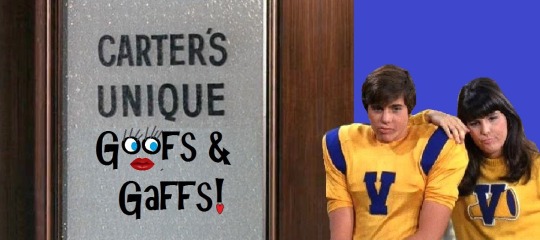
Get the Door! During the TV commercial, when Harry (as Sheldon) slams the front door, the suction causes the closet door to swing wider open, momentarily distracting Gale Gordon who quickly turns to see what is moving behind him.
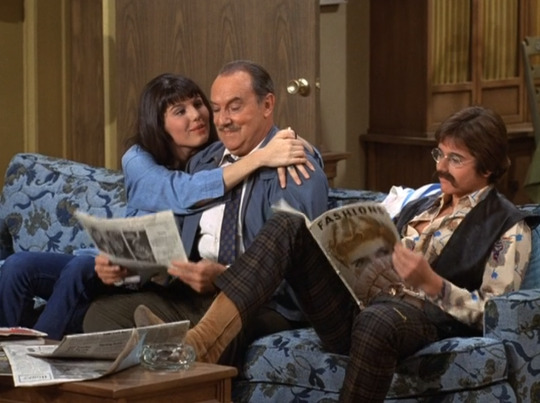
Fashion Magazine? In the commercial, ‘Craig’ browses through Fashions magazine, an unlikely choice for a teenage boy. Perhaps this iteration of Craig is destined to become a fashion designer?
Loose Lips! Although Harry's comical yodeling during “Heavenly Music” is obviously not Gale Gordon's voice, there are times he gets more involved with the wayward daisy in Lucy's hat than the lip synching.

“Lucy and Tennessee Ernie’s Fun Farm” rates 3 Paper Hearts out of 5
This episode is like a cross between “Hee Haw” and “The Grand Old Opry” but very short on plot. After a few lines of Ernie's homespun wisdom, there is a very funny TV commercial which imagines Lucy and Gale Gordon as a bickering married couple. The rest is a straight up musical revue.
#Here's Lucy#Lucille Ball#Tennessee Ernie Ford#Gale Gordon#Lucie Arnaz#Desi Arnaz Jr.#The Back Porch Majority#Larry Billman#Bob O'Brien#Jack Donohue#Oklahoma!#Omar Sharif#Smog#Model-T#Porky Pig#Jolly Green Giant#Bride of Frankenstein#Roar of the Greasepaint Smell of the Crowd#Song of the South#Summer Stock#Y'All Come#Sombreros#Little Green Apples#TV Commercial#1969#TV#CBS
3 notes
·
View notes
Text
XXI: 1921
On Black Suffering as Spectacle, Paths to Immortality, and the Art of Noise

1. Noble Sissle and Eubie Blake: “Love Will Find a Way”
1920 saw Black American performers finally allowed to speak in their own voice on record, not an assumed one or through a minstrel mediary; and 1921 was the year that the same thing happened, in an even more unlikely fashion, on (actually off-off-) Broadway. Just like “Crazy Blues,” Shuffle Along saw the respectable tenth cringe at its low-down humor and sexy swing, and later generations would reject the blacked-up comedians who enacted the ribbon-thin plot, but attendance records were hardly broken over some slapstick: as with all good shows, catchy melodies sold tickets. Sissle had sung with Jim Europe, and Blake had ragged up and down the coast, and their score, jaunty or rowdy or plaintive as necessary, made Shuffle Along the first jazz musical. But this, the lovers’ duet, is more besides: the first true Black American love song, unblemished by minstrelsy.
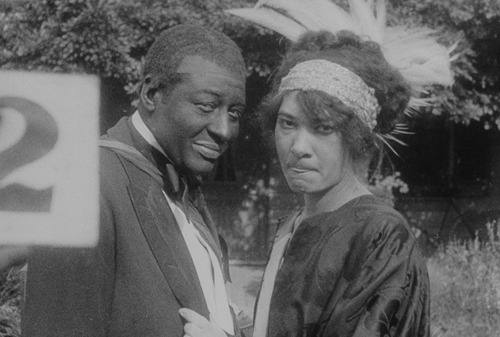
2. Bert Williams: “Brother Low Down”
As a new generation, the jazz generation represented here by Sissle and Blake, dawns, the previous generation, powered by ragtime, vaudeville patter, and Coon song, sets. Bert Williams, here from the beginning, bows off with this mordant character sketch of an itinerant street preacher begging for booze money and defensive about his preaching permit. It’s Coonery, in the generic sense of presenting a caricature of blackness for the amusement of whites, but it’s also part of a long Black (and Jewish) tradition satirizing religious hypocrisy and celebrating idiosyncratic locutions. Williams collapsed on stage in February 1922, his final public act being to raise a laugh from an unfeeling audience believing it was part of the show. Which as a metaphor for his career, and the entire century, is hard to better: Black suffering as just another disposable consumer product, entertainment to the end.

3. Ethel Waters: “There’ll Be Some Changes Made”
With a song pitched at the exact midpoint between Sissle and Blake’s middle-class reverie and Williams’ working-class satire, we meet one of the century’s legendary figures, one of the peerless voices of the jazz-song revolution already underway. Written by overlooked Black composer Benton Overstreet and underappreciated Black comedian Billy Higgins (both retrospectively pointed out by Langston Hughes as masters in their field), “There’ll Be Some Changes Made” lifts a line from “Crazy Blues” to produce a more overtly comic song about putting oneself back together after being walked out on by a no-good man. Waters’ sweet-and-sour voice neither overplays the comedy nor makes a blues tragedy of the material: one of the first great recordings of the Harlem Renaissance, its clear-eyedness and good humor about sexual relations between consenting adults makes yet another subject on which Black America reluctantly instructed its white counterpart.
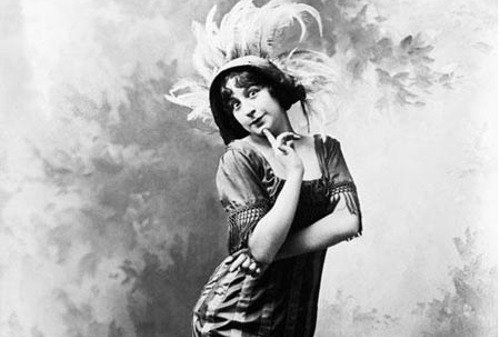
4. Fanny Brice: “Second Hand Rose”
The B side of Victor 45263 would in time prove to be one of the most influential recordings in US musical history, arguably inventing the torch song as a genre, but we met “Mon homme” last year on the continent where it was even more influential. Anyway the A side, “Second Hand Rose,” is far truer to Fanny Brice’s stage persona: a nice but impoverished Jewish goil whose ignorance, forthrightness, and pretensions are played for laughs — but crucially, the laughs came not only from the presumed upper-crust WASP theater audience, but from her fellow immigrants. The rubber-faced, nervily dynamic performer born Fania Borach had headlined the Follies in 1910, when she was just nineteen; ten years later she was back with Ziegfeld and bigger than ever. Jolson and Cantor got better publicity, but of that generation of Jewish-American stars, she was the genius.
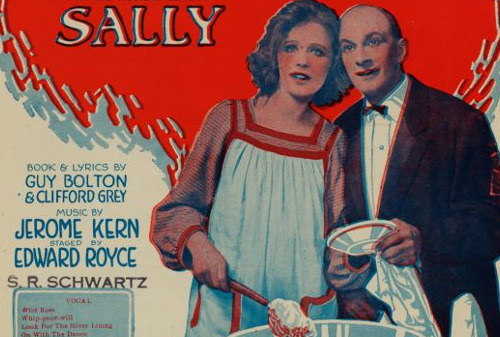
5. Marion Harris: “Look for the Silver Lining”
Three years on from the Great War, only one of the Powers was experiencing an economic boom. Americans have traditionally been optimists anyway, but the psychological moment was even more ripe for popular songs expounding on the tenets of the New Thought, a philosophical charlatanry whose descendants include the Power of Positive Thinking and the Secret. Even Al Jolson making a bid as the Apostle of Pep with “April Showers” wasn’t as complete a victory for the sunny-side-up brigade as the smash hit from Sally, the Jerome Kern musical which inaugurated the Flapper decade almost as neatly as Shuffle Along inaugurated the Harlem same. The lyric for “Look for the Silver Lining” functions beautifully in the show as the plucky title character’s never-say-die philosophy, but it’s that swoony Kern melody which has made it immortal, long after every silver lining has rusted over.
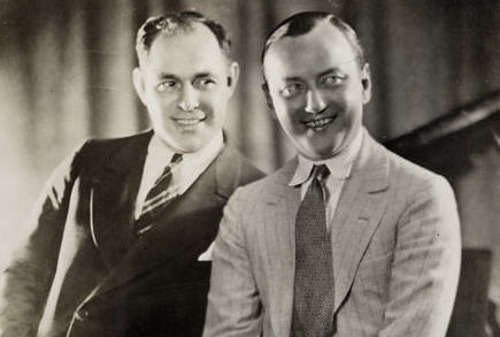
6. Van & Schenck: “Ain’t We Got Fun?”
A more cynical philosophy, if one just as indelibly associated with the new decade, is expressed here, in our first encounter with Tin Pan Alley composer Richard A. Whiting, whose career will cross our paths many times more. His skip-a-doodle melody ensured the song a long life in newsboy’s whistles, but it’s Gus Kahn’s witty, slangy lyric, highlighting the contrast between the jet-setting lifestyle promised in magazine advertisements and the actual poverty experienced by millions in a time of ever-sharper inequality, that made the tune so characteristic of its era that it’s been quoted everywhere from Gatsby to Zelig. The vaudeville harmonists Gus Van (baritone) and Joe Schenck (countertenor), Americans of German stock who happily embraced Irish, Italian, or Jewish stereotypes depending on the routine, had the hit record, and their beefy, down-the-middle rendition sells both the title’s cheerfulness and the verses’ shrug.

7. Sam Moore: “Laughing Rag”
As jazz became, seemingly overnight, the newest sensation in popular music, its forefather ragtime, freed from the burden of being the most advanced thing going, continued to mutate. This record, essential to any history of jazz or even country music, takes the Hawai'ian slack-key technique (though on the Octo-Chord, a custom-built eight-string guitar) and applies it to ragtime proper, approaching jazz at one end and predicting Nashville steel pedal workouts for generations to come at the other. His protegé Roy Smeck’s 1928 cover of “Laughing Rag” is canonical in Grand Ole Opry lore, but it is Virginia-born vaudevillian, eccentric, and (briefly) Follies star Sam Moore who sits at the crossroads of Hawai'ian and country music, and his ragtime will, as we will see, spread kudzu-like through the broad highways and quiet backwaters which make up all the musical permutations of the American South.
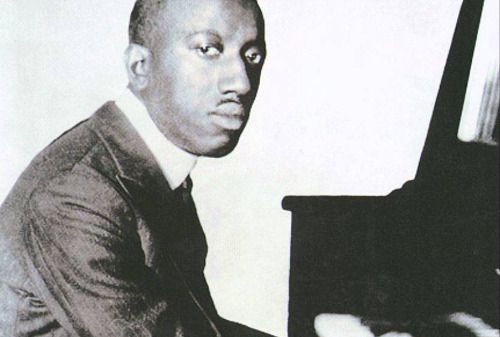
8. James P. Johnson: “Keep Off the Grass”
Another, and perhaps more consequential, mutation of ragtime was the strain developed by piano hustlers at Harlem rent parties, hired hands to make the joint bounce so the hosts could make rent, a strain which only made its way onto record in 1921. New Jersey native James P. Johnson was the acknowledged master of the new “stride” piano style, so named because of the distance the hands traveled in order to maintain the rock-solid rhythm and harmonic filigree. Comparison to the popular piano novelty of the day, “Kitten on the Keys,” is instructive: Johnson’s composition has a real low end, a greater chromatic range, and an ass-shaking drive. Where “Kitten” simpers, “Grass” slams, which is why stride looks forward to boogie-woogie and thence to rock & roll, and thus gains a measure of eternity. Novelty lives for a day; Black American jazz is forever.

9. Johnnie Dunn’s Original Jazz Hounds acc. Edith Wilson: “Nervous Blues”
The “Crazy Blues” blues craze continues apace; this overview, attempting to look in dozens of directions at once, can only skim the surface. Edith Wilson was an another all-around singer rather than a blues singer strictly speaking, and had only been professional for two years when she found herself swept up in Columbia’s dragnet. With Wilson singing a Perry Bradford composition for Johnnie Dunn, who had led Mamie Smith’s band, “Nervous Blues” is as straight a sequel to “Crazy Blues” as anything, including Mamie’s own voluminous output. The subject was in the zeitgeist anyway — popularizations of Freud claimed nerves as the trouble of the age, and nervous disorders were, along with urbanization and Jewishness, diagnosed as one of the three scourges of traditional values by reactionaries everywhere, including Hitler; in which climate, there’s something heroic about a Black woman owning her mental health.

10. Gertrude Saunders: “I’m Craving for That Kind of Love”
Edith Wilson’s primary claim to fame in the later 1920s would be her showcases in revues built around Florence Mills, the startling comet of Black excellence in music, dance and comedy who flashed so briefly across the Harlem Renaissance that she never recorded; but she will haunt these pages. Florence was catapulted to fame as a replacement for the soubrette role in Shuffle Along; the woman she replaced was Gertrude Saunders, whose most legendary achievement in later years was getting cold-cocked by Bessie Smith over a man; but here, singing the song that Florence would make her own within a year, she whoops and hollers, turning Sissle and Blake’s original tune almost unrecognizable in her performance of salacious, wild-child desire. It’s the sort of gleefully unhinged performance that would come to be associated with punk rock, and it’s all we have of her.
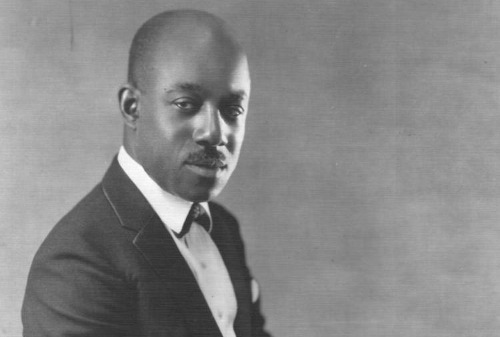
11. Eubie Blake: “Sounds of Africa”
As epochal as Shuffle Along was, it was not the only, or perhaps even the greatest, achievement of its composer in the year of his glory. “Sounds of Africa,” its title usually changed to “Charleston Rag” in later publication form, is one of the deathless piano solos of a decade in which the piano solo recording became an art form to itself. Blake’s heterogenous musical apprenticeship had included years playing for the high rollers in Atlantic City, one of the liminal spaces where white people consumed Black bodies, services, and art without making much distinction between them; generally unaware that those Black bodies were doing just as much consuming. “Sounds of Africa” features both a funky walking bassline and Debussy-like chromaticism, and it is ragtime pushing not just into furious, hard-rocking modernism, but into regions of pure sound. That you can dance to.

12. Carlos Gardel: “La copa del olvido”
Tango and jazz were experiencing simultaneous early golden ages in 1921, but the dynamics of the musics’ dissemination were quite different. Shuffle Along was a landmark theatrical event, the first jazz musical; meanwhile, Cuando un pobre se divierte, the play from which “La copa del olvido” became working-class dramatist and lyricist Alberto Vaccarezza’s first hit song, was only another of the hundreds of sainetes criollos, in which tango songs were de rigeur, being produced in Buenos Aires in those years. Gardel, the by now irreplaceable voice of tango, recording the song — and Enrique Delfino, who has appeared here frequently as a composer, providing the music — was a greater imprimatur than the show. Although neither Gardel’s tremulous performance nor Delfino’s sketchy melody make the song immortal: that’s the lyric, in which the singer calls for another round while he contemplates murdering his faithless lover.

13. Grupo do Moringa: “No rancho”
The vast majority of our visits to Brazil have been to Rio de Janeiro, where the port-town outbreaks of miscegenation, musical and otherwise, allowed such epochal musical traditions as the samba to flourish. But Brazil has always been much larger and more diverse than that; as one hint of which, over to composer Eduardo Souto, born in Rio but who consciously worked in all of the established Brazilian (and some foreign) musical fields. “No rancho” (in the countryside) is designated as a cateretê, by legend an ancient folkloric Amerindian dance, revived by São Paulo cosmopolites like vanguardist poet and novelist Mário de Andrade, who considered it one of the few authentic Brazilian traditions. Souto’s melodic and rhythmic sense, though, is anything but ancient, and such representations of countrified subaltern traditions given national mythological meaning by sophisticated urban tastemakers was hardly limited to Brazil.

14. Georgel: “La vipère”
Vincent Scotto, the great twentieth-century composer of French chanson réaliste, is by now a regular in these pages, but the interpreter is new to us, though in 1921 he was well-known to Parisian audiences. His pompadour and mincing stage manner was borrowed (with blessings) from Félix Mayol, and his choice of repertoire owed something to music-hall legend Harry Fragson, but between the wars Georgel far outstripped his old masters as one of the key voices of les années folles. “La vipère” is about one of Scotto’s (and popular culture’s) standbys, the female viper, who tempts the young man away from work, home, and family, to keep him in misery while she sells her body. He gets his revenge in the final verse in classic Grand Guignol fashion, but the gruesome narrative isn’t really the point: Georgel’s half-sobbing, half-humorous delivery exemplifies the (French) decade.

15. Orchester mit Refraingesang: “Das Lila Lied”
A landmark in queer media, “Das Lila Lied” (the lilac song) was very likely the first gay anthem in Western popular music. Deviance, sexual and otherwise, had long been a subject of chanson, but lyricist Kurt Schwabach and composer Mischa Spoliansky — two Jews working in Berlin’s legendary queer-friendly kabarett scene — dedicated their lied to Magnus Hirschfeld, the researcher whose Institute for Sexual Science was the first organization in the Western world to advocate for the rights of homosexual and transgender citizens. The chorus, which begins and ends “We are different from the others,” is as much protest song as sentimental education, the way pop usually works; but although the Weimar Republic officially protected homosexuality, it was still so taboo that Spoliansky used a pen name, and as far as I can ascertain, the players and singer of this, the first recording, remain uncredited.
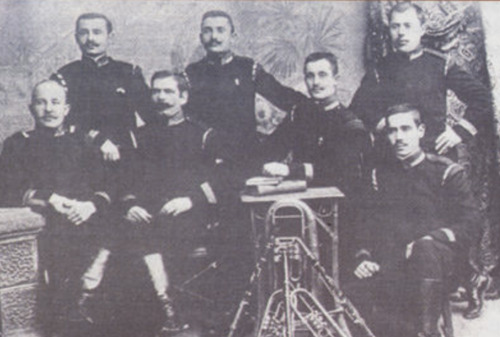
16. Kandel’s Orchestra: “A Zoi Feift Min Un a Schweiger”
By 1921, the most modern and up-to-date form of popular music was the dance band, playing uptempo, lightly syncopated but not actually jazzy music with orchestral instruments. Paul Whiteman was the clear leader, but there were similar outfits in every city in the nation, and much of the rest of the world. Which was nothing new to the Eastern Europe-born klezmorim of New York, who had been working in similarly-sized outfits, and often at much faster tempos, for decades without being embraced by uptown goyim hotel dancefloors. Clarinetist Harry Kandel, born in the Ukraine, was one of the great klezmer bandleaders of the era, and on this recording, “Putting it Over on Mother in Law,” he pushes his orchestra to such whirling, piercing heights, with the drummer knocking regular off-beats, that together they predict not only swing, but even elements of free jazz.
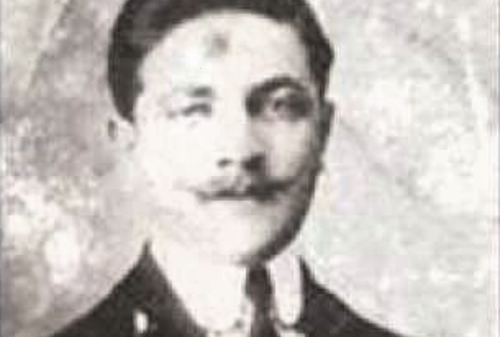
17. Achilleas Poulos: “Kamomatou”
Relatively little is known about proto-rebetiko singer Achilleas Poulos, save that he was born in the northwestern Balıkesir province of Turkey (then the Ottoman Empire), and emigrated to the United States in 1913. His powerful voice and wide repertoire made him a briefly popular recording artist in the Ottoman-Greek diasporic community, recording for just ten years before falling silent until his death in 1970. In this early recording, issued by an independent Armenian label in New York, the stark instrumentation (Poulos himself played the oud) creates a surprisingly modern backdrop for his arresting, emotional voice as he sings a lament of unrequited love, full of ancient, stark imagery like flames, clouds, and darkness. “Kamomatou” (lit. mischief-maker) can be translated as coquette or temptress, a woman who makes hay of men, and it’s been used frequently as a title in twentieth-century Greek songs.
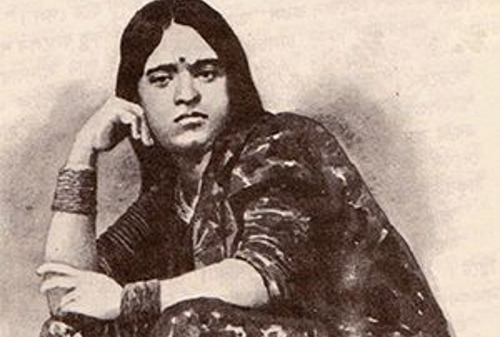
18. Miss Indubala: “Ore Majhi Tori Hetha”
It’s virtually impossible to fit most Asian recording activity into the models I’ve been building of emergent Western popular musics; this recording by a young woman who would, a decade later, become one of the early stars of Bollywood, both on screen and in playback recording, was not so much a remarkable record in its moment as it is a historical marker, a signpost on the road to emergent modernism. The droning backdrop of the harmonium, introduced to the subcontinent by Victorian colonizers and still despised by classical purists in the early 20th century, is one element of modernity: another is the parenthetical (Jangla) on the label, indicating that the performance is a combination of two or more traditional ragas. The third is Indubala Devi herself, trained in the vanishing courtesan-singer tradition of Kolkata, granting herself immortality by saying her name on record.
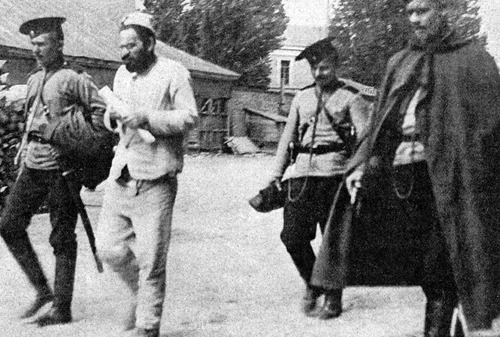
19. Jacob Gegna: “A Tfileh Fun Mendel Beilis”
In 1911, the body of a young boy was found mutilated on the outskirts of Kiev. Authorities arrested a local factory superintendent on suspicion of his having murdered the child in a secret Jewish blood ritual. After Mendel Beilis insisted on clearing his name, refusing a general clemency for convicted felons, his trial was one of the sensations of the late Tsarist era. The most infamous blood libel of the twentieth century swept up honest investigators and reporters who were threatened with dismissal or worse for defending the innocent man; Beilis was finally acquitted after two years of a horrific media circus, followed particularly closely by the millions of Jewish immigrants in the United States. Jacob Gegna, a violinist who had himself immigrated from the Ukraine the following year, cut a single record in 1921, including this moving tribute to the innocent Beilis.

20. Michael Coleman: “The Shaskeen”
Traditional Irish music has rarely taken up much space in these pages, and will continue to do so; my emphasis on novelty, hybridity, and pop ethics over tradition, purity, and folk ethics means that there’s rarely much space for purely local traditions, no matter how sentimentally widespread. Still, I have two ears and a heart. Probably the most influential traditional Irish musician of the twentieth century, Michael Coleman was a remarkable exponent of the Sligo fiddle tradition, playing fast-paced, polyphonic reels that allow him and his piano accompanist to sound like a full band. “The Shaskeen” was one of his first records, a corruption of the Irish seisgeann or marshland, and its sheer velocity makes plain the hypothesis that American vernacular music gets its funk from its African heritage and its recklessness from its Irish. And in December 1921, Ireland was free.

21. Antonio and Luigi Russolo: “Corale”
Eight years after Luigi Russolo’s landmark Futurist manifesto L’arte dei Rumori, in which he theorized an industrial, electronic “art of noises” that would come to replace the limited sonic palette of the traditional orchestra, a solitary 10-inch record was issued which combines his brother Antonio’s conventional orchestral pomp with the roar and howl of the Intonarumori, acoustic instruments of Luigi’s design that produced atonal snarls of noise by vibrating strings at different frequencies, amplified by a drum. It is an explosion of the avant-garde into the safe commercial marketplace of the recording industry, and it was followed by years -- even decades -- of silence. It will not be for another thirty years that further experiments in using pure noise as music become commonplace, by which time the whole structure of recording will have been transformed. But here in the 21st century, Russolo was right.
19 notes
·
View notes
Text
MerleFest Announces Initial 2023 Lineup Featuring The Avett Brothers, Maren Morris, Black Opry Revue & More

https://music.mxdwn.com/2022/11/15/news/merlefest-announces-initial-2023-lineup-featuring-the-avett-brothers-maren-morris-black-opry-revue-more/
1 note
·
View note